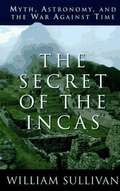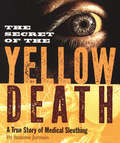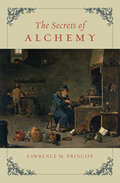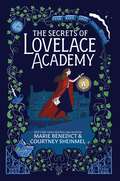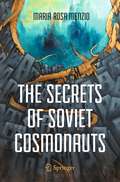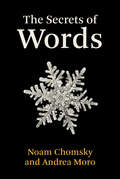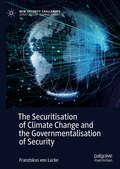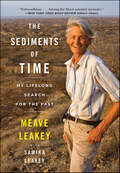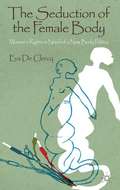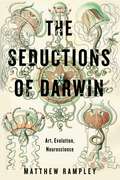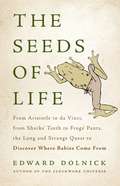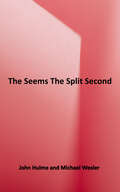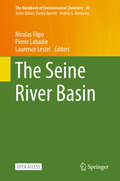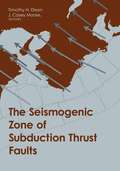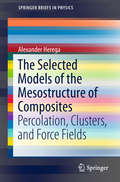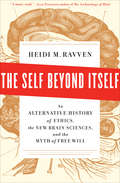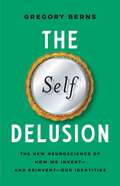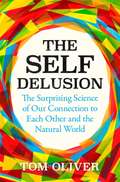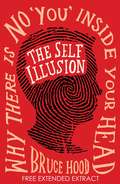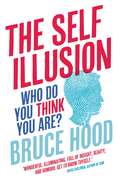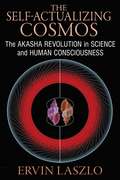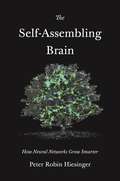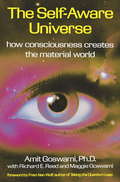- Table View
- List View
The Secret of the Incas: Myth, Astronomy and the War Against Time
by William SullivanThe Inca Empire, at its peak, was the largest kingdom on Earth. The Incas were known as master builders, fearsome warriors, and practitioners of human sacrifice. Yet in the year 1532, this mighty state was conquered, overnight, by fewer than 200 Spanish adventurers. How could this happen? That question begins William Sullivan's brilliant and profound book, The Secret of the Incas. Like Heinrich Schliemann's discovery of Troy, Sullivan's discovery of the historical truth hidden in the myths of the Andes is a thrilling historical detective story. At the same time, it recalls the work of Joseph Campbell, finding new meaning in ancient legends. Step by step, clue by clue, Sullivan decodes the myths of the Incas to reveal that they embody an astoundingly thorough record of astronomical events--a record so precise it can be checked against a modern computer program. And he uncovers the Incas' tragic secret: they knew they were doomed. As they watched the skies for over a thousand years, the priest-astronomers of the Andes came to believe that great transitions in the heavens foretold great transitions here on earth. In the fifteenth century, they read the sky and saw the signs of an apocalypse. So the Incas took a desperate gamble: if events in the heavens could influence those on earth, perhaps the reverse was true. Their rituals of warfare and human sacrifice were nothing less than an attempt to stop time, to forestall the cataclysm that would sweep their world away. The Inca gamble failed, for just at the time the prophecy predicted, the Conquistadors arrived. Yet even as their world collapsed, the Andean shamans set their wisdom afloat in the waters of time, aboard the vessel of myth. In this book, after four centuries of oblivion, their message has been received.
The Secret of the Yellow Death: A True Story of Medical Sleuthing
by Suzanne JurmainRed oozes from the patient's gums. He has a rushing headache and the whites of his eyes look like lemons. He will likely die within days. Here is the true story of how four Americans and one Cuban tracked down a killer, one of the word's most vicious plagues: yellow fever. Set in fever-stricken Cuba, the reader feels the heavy air, smell the stench of disease, hear the whine of mosquitoes biting human volunteers during the surreal experiments. Exploring themes of courage, cooperation, and the ethics of human experimentation, this gripping account is ultimately a story of the triumph of science.
The Secrets of Alchemy (Synthesis)
by Lawrence M. Principe"This elegant, readable book…covers the history of alchemy from its shadowy origins in Hellenistic Egypt to its scholarly recovery in the 20th century&” (Anthony Grafton, Science). In The Secrets of Alchemy, science historian and practicing chemist Lawrence M. Principe dispels commonly held misconceptions about alchemy and sheds light on what it was, how it began, and how it influenced a range of other ideas and pursuits. Principe demonstrates the importance of alchemy during its heyday in early modern Europe, and explores its enduring place in literature, fine art, theater, and religion as well as its recent acceptance as a serious subject of study for historians of science. Principe also introduces readers to some of the most fascinating alchemists, such as Zosimos and Basil Valentine, whose lives dot alchemy&’s long reign from the third century and to the present day. Through his discussion of alchemists and their times, Principe pieces together clues from obscure texts to reveal alchemy&’s secrets, and uses them to recreate many of the most famous recipes in his lab, including those for the &“glass of antimony&” and &“philosophers&’ tree.&”
The Secrets of Lovelace Academy
by Courtney Sheinmel Marie BenedictFrom New York Times bestselling author Marie Benedict and Courtney Sheinmel comes a historical adventure about a young girl plucked from a London orphanage to begin attending a boarding school with more secrets than she could imagine—perfect for fans of Enola Holmes.Lainey Philipps has lived at the Sycamore Home for Orphaned Children since she was three years old. Now nearly a teenager, her life is hard, and she doesn&’t expect it to get better—until a chance encounter during an open house changes everything when Lainey meets a woman who invites her to attend the prestigious Lovelace Academy. Fitting in amongst the many privileged students within the ivy-covered walls of Lovelace Academy presents challenges unlike the ones Lainey has faced in the past. Her life of drudgery has hardly prepared her for the aristocratic airs and cutthroat academic ambition of the other girls. Terrified she&’ll be cast out of the academy, Lainey grabs at her chance to prove herself by traveling to Switzerland to meet a female scientist crafting a groundbreaking theory. Determined to prove her capability and reach her destination, Lainey must rely on her own wit—as well as a mysterious boy who has yet to prove himself as friend or foe. But the real test is what awaits her in Switzerland, at the home of Mileva Maric, wife of Albert Einstein.
The Secrets of Plants (Unit 6: A Kingdom of Green)
by Wright GroupIn fifth grade, reading and writing skills continue to support an increased emphasis on content area learning and utilization of a variety of resources to locate and read primary sources of information. The student will read texts in all subjects and will acquire information to answer questions, generate hypotheses, make inferences, support opinions, confirm predictions, compare and contrast relationships, and formulate conclusions. The student will continue to develop an appreciation for literature by reading a variety of fiction and nonfiction selections. The student will continue to increase communication skills used in learning activities and create a project using online, print, and media resources.
The Secrets of Soviet Cosmonauts
by Maria Rosa MenzioThis book sheds new light on an amazing history, only partially known in the west: Russian cosmonautics and its spectacular record. From Laika, the cosmonaut dog, to Yuri Gagarin, the first man in space, to Valentina Tereshkova, the first woman in space, to the first spacewalk, the Soviets set many goals that they subsequently achieved. But there are shadows behind these headline moments, moments involving human loss, some of which are known, others only rumored. Questions remain, such as: · What was the “flying coffin”? · What secrets are still hidden inside the Russian archives, despite two rounds of declassification? · Why didn’t Marina Popovich (“Madame Mig”) become a cosmonaut? · What problems made it necessary to film Valentina Tereshkova's return? · What (scientific) hypotheses exist concerning Gagarin's mysterious disappearance? The author addresses all of these issues, with help from the documents now available. This book will benefit a broad readership, from interested laypersons to graduate and undergraduate students to those who merely enjoy good history-based stories.
The Secrets of Words
by Noam Chomsky Andrea MoroTwo distinguished linguists on language, the history of science, misplaced euphoria, surprising facts, and potentially permanent mysteries.In The Secrets of Words, influential linguist Noam Chomsky and his longtime colleague Andrea Moro have a wide-ranging conversation, touching on such topics as language and linguistics, the history of science, and the relation between language and the brain. Moro draws Chomsky out on today&’s misplaced euphoria about artificial intelligence (Chomsky sees &“lots of hype and propaganda&” coming from Silicon Valley), the study of the brain (Chomsky points out that findings from brain studies in the 1950s never made it into that era&’s psychology), and language acquisition by children. Chomsky in turn invites Moro to describe his own experiments, which proved that there exist impossible languages for the brain, languages that show surprising properties and reveal unexpected secrets of the human mind. Chomsky once said, &“It is important to learn to be surprised by simple facts&”—&“an expression of yours that has represented a fundamental turning point in my own personal life,&” says Moro—and this is something of a theme in their conversation. Another theme is that not everything can be known; there may be permanent mysteries, about language and other matters. Not all words will give up their secrets.
The Securitisation of Climate Change and the Governmentalisation of Security (New Security Challenges)
by Franziskus von LuckeThis book provides an in-depth analysis of the securitisation of climate change in the US, Germany and Mexico and offers a rethinking of securitisation theory. Resting on a Foucauldian governmentality approach, it discusses how different climate security discourses have transformed the political handling of climate change and affected policies, practices and institutions. Going beyond the literature’s predominant focus on the global level, it gives a fine-grained examination of the political and institutional changes in different national contexts. Drawing on the governmentalisation of security, the book develops a new understanding of securitisation that focuses on the role of power. In doing so, it provides new insights into the transformative potential of linking climate change to security but also highlights the political and normative pitfalls of securitisation. ‘In this important book, Franziskus von Lucke provides a theoretically sophisticated and empirically rich account of the relationship between security and climate change. Developing a Foucauldian-inspired account of securitization, the book rejects blanket or universal claims about the climate change- security relationship, instead insisting on the need to critically examine how the securitization of climate change plays out in particular empirical contexts. Exploring the cases of the US, Germany and Mexico, von Lucke points to distinctive dynamics of securitization in these settings, with different implications for the practices these in turn encourage. Ultimately, this book constitutes an important addition to literature on the relationship between climate change and security, while developing a distinct and nuanced account of securitization that will be of interest to a wide range of scholars of security in international relations.’—Associate Professor Matt McDonald is a Reader in International Relations at the University of Queensland, Australia ‘In 2019 a number of states and other actors (notably the European Union) have made climate emergency declarations. It is therefore more important than ever to understand what the securitization of the climate means. That is: Who can securitize? What security measures are likely/ deemed legitimate by relevant audiences? How does securitization affect the population within and outside a securitizing state? And perhaps most importantly of all, will it succeed? Franziskus von Lucke’s carefully researched book offers answers to all of these questions and many others besides. von Lucke proceeds by examining with the US, Mexico and Germany, three real-life empirical cases of climate securitization. Each one provides unique insights that enable a fuller understanding of climate security. Accessibly written this is a must read for scholars and practitioners alike.’ —Dr Rita Floyd, University of Birmingham, UK, author of The Morality of Security: A theory of just Securitization, CUP, 2019 With great empirical detail and conceptual clarity, the book compares discourses and practices of climate security in different contexts. An essential reading for anyone interested in international climate politics, securitization theory, governmentality and the notion of power in International Relations. —Dr Delf Rothe, Institute for Peace Research and Security Policy Hamburg at the University of Hamburg, Germany
The Sediments of Time: My Lifelong Search for the Past
by Meave Leakey Samira Leakey"Extraordinary . . . This inspirational autobiography stands among the finest scientist memoirs." —New York Times Book Review, Editors' ChoiceMeave Leakey&’s thrilling, high-stakes memoir—written with her daughter Samira—encapsulates her distinguished life and career on the front lines of the hunt for our human origins, a quest made all the more notable by her stature as a woman in a highly competitive, male-dominated field. In The Sediments of Time, preeminent paleoanthropologist Meave Leakey brings us along on her remarkable journey to reveal the diversity of our early pre-human ancestors and how past climate change drove their evolution. She offers a fresh account of our past, as recent breakthroughs have allowed new analysis of her team&’s fossil findings and vastly expanded our understanding of our ancestors. Meave&’s own personal story is replete with drama, from thrilling discoveries on the shores of Lake Turkana to run-ins with armed herders and every manner of wildlife, to raising her children and supporting her renowned paleoanthropologist husband Richard Leakey&’s ambitions amidst social and political strife in Kenya. When Richard needs a kidney, Meave provides him with hers, and when he asks her to assume the reins of their field expeditions after he loses both legs in a plane crash, the result of likely sabotage, Meave steps in. The Sediments of Time is the summation of a lifetime of Meave Leakey&’s efforts; it is a compelling picture of our human origins and climate change, as well as a high-stakes story of ambition, struggle, and hope."A fascinating glimpse into our origins. Meave Leakey is a great storyteller, and she presents new information about the far off time when we emerged from our ape-like ancestors to start the long journey that has led to our becoming the dominant species on Earth. That story, woven into her own journey of research and discovery, gives us a book that is informative and captivating, one that you will not forget."—Jane Goodall, PhD, DBE, Founder of the Jane Goodall Institute
The Seduction of the Female Body
by Eva De ClercqDrawing on the ambiguous meaning of the notion of vulnerability, the book offers an innovative approach to the topic of the female body in relation to women's rights; going beyond the age-old dichotomy of casting women as either passive victims or conscious agents.
The Seductions of Darwin: Art, Evolution, Neuroscience
by Matthew RampleyThe surge of evolutionary and neurological analyses of art and its effects raises questions of how art, culture, and the biological sciences influence one another, and what we gain in applying scientific methods to the interpretation of artwork. In this insightful book, Matthew Rampley addresses these questions by exploring key areas where Darwinism, neuroscience, and art history intersect.Taking a scientific approach to understanding art has led to novel and provocative ideas about its origins, the basis of aesthetic experience, and the nature of research into art and the humanities. Rampley’s inquiry examines models of artistic development, the theories and development of aesthetic response, and ideas about brain processes underlying creative work. He considers the validity of the arguments put forward by advocates of evolutionary and neuroscientific analysis, as well as its value as a way of understanding art and culture. With the goal of bridging the divide between science and culture, Rampley advocates for wider recognition of the human motivations that drive inquiry of all types, and he argues that our engagement with art can never be encapsulated in a single notion of scientific knowledge.Engaging and compelling, The Seductions of Darwin is a rewarding look at the identity and development of art history and its complicated ties to the world of scientific thought.
The Seductions of Darwin: Art, Evolution, Neuroscience
by Matthew RampleyThe surge of evolutionary and neurological analyses of art and its effects raises questions of how art, culture, and the biological sciences influence one another, and what we gain in applying scientific methods to the interpretation of artwork. In this insightful book, Matthew Rampley addresses these questions by exploring key areas where Darwinism, neuroscience, and art history intersect.Taking a scientific approach to understanding art has led to novel and provocative ideas about its origins, the basis of aesthetic experience, and the nature of research into art and the humanities. Rampley’s inquiry examines models of artistic development, the theories and development of aesthetic response, and ideas about brain processes underlying creative work. He considers the validity of the arguments put forward by advocates of evolutionary and neuroscientific analysis, as well as its value as a way of understanding art and culture. With the goal of bridging the divide between science and culture, Rampley advocates for wider recognition of the human motivations that drive inquiry of all types, and he argues that our engagement with art can never be encapsulated in a single notion of scientific knowledge.Engaging and compelling, The Seductions of Darwin is a rewarding look at the identity and development of art history and its complicated ties to the world of scientific thought.
The Seeds of Life: From Aristotle to da Vinci, from Sharks' Teeth to Frogs' Pants, the Long and Strange Quest to Discover Where Babies Come From
by Edward DolnickWhy cracking the code of human conception took centuries of wild theories, misogynist blunders, and ludicrous mistakes Throughout most of human history, babies were surprises. People knew the basics: men and women had sex, and sometimes babies followed. But beyond that the origins of life were a colossal mystery. The Seeds of Life is the remarkable and rollicking story of how a series of blundering geniuses and brilliant amateurs struggled for two centuries to discover where, exactly, babies come from. Taking a page from investigative thrillers, acclaimed science writer Edward Dolnick looks to these early scientists as if they were detectives hot on the trail of a bedeviling and urgent mystery. These strange searchers included an Italian surgeon using shark teeth to prove that female reproductive organs were not 'failed' male genitalia, and a Catholic priest who designed ingenious miniature pants to prove that frogs required semen to fertilize their eggs.A witty and rousing history of science, The Seeds of Life presents our greatest scientists struggling-against their perceptions, their religious beliefs, and their deep-seated prejudices-to uncover how and where we come from.
The Seems: The Split Second: Book 2 (The\seems Ser.)
by John Hulme Michael WexlerNow thirteen years old and still a Fixer in the parallel universe called The Seems, Becker Drane is called upon to repair the damage caused by an enormous bomb planted in the Department of Time, an act of terrorism perpetrated by the evil members of The Tide, a group that is trying to destroy The World.
The Seine River Basin (The Handbook of Environmental Chemistry #90)
by Nicolas Flipo Pierre Labadie Laurence LestelThis open access book reviews the water-agro-food and socio-eco-system of the Seine River basin (76,000 km2), and offers a historical perspective on the river’s long-term contamination. The Seine basin is inhabited by circa 17 million people and is impacted by intensive agricultural practices and industrial activities. These pressures have gradually affected its hydrological, chemical and ecological functioning, leading to a maximum chemical degradation between the 1960s and the 1990s. Over the last three decades, while major water-quality improvements have been observed, new issues (e.g. endocrine disruptors, microplastics) have also emerged. The state of the Seine River network, from the headwaters to estuary, is increasingly controlled by the balance between pressures and social responses. This socio-ecosystem provides a unique example of the functioning of a territory under heavy anthropogenic pressure during the Anthropocene era. The achievements made were possible due to the long-term PIREN Seine research program, established in 1989 and today part of the French socio-ecological research network “Zones Ateliers”, itself part of the international Long-term Socio-economic and Ecological Research Network (LTSER). Written by experts in the field, the book provides an introduction to the water budget and the territorial metabolism of the Seine basin, and studies the trajectories and impact of various pollutants in the Seine River. It offers insights into the ecological functioning, the integration of agricultural practices, the analysis of aquatic organic matter, and the evolution of fish assemblages in the Seine basin, and also presents research perspectives and approaches to improve the water quality of the Seine River. Given its scope, it will appeal to environmental managers, scientists and policymakers interested in the long-term contamination of the Seine River.
The Seismogenic Zone of Subduction Thrust Faults (MARGINS Theoretical and Experimental Earth Science Series)
by J. Casey Moore Timothy H. DixonSubduction zones, one of the three types of plate boundaries, return Earth's surface to its deep interior. Because subduction zones are gently inclined at shallow depths and depress Earth's temperature gradient, they have the largest seismogenic area of any plate boundary. Consequently, subduction zones generate Earth's largest earthquakes and most destructive tsunamis. As tragically demonstrated by the Sumatra earthquake and tsunami of December 2004, these events often impact densely populated coastal areas and cause large numbers of fatalities. While scientists have a general understanding of the seismogenic zone, many critical details remain obscure. This volume attempts to answer such fundamental concerns as why some interplate subduction earthquakes are relatively modest in rupture length (greater than 100 km) while others, such as the great (M greater than 9) 1960 Chile, 1964 Alaska, and 2004 Sumatra events, rupture along 1000 km or more. Contributors also address why certain subduction zones are fully locked, accumulating elastic strain at essentially the full plate convergence rate, while others appear to be only partially coupled or even freely slipping; whether these locking patterns persist through the seismic cycle; and what is the role of sediments and fluids on the incoming plate.Nineteen papers written by experts in a variety of fields review the most current lab, field, and theoretical research on the origins and mechanics of subduction zone earthquakes and suggest further areas of exploration. They consider the composition of incoming plates, laboratory studies concerning sediment evolution during subduction and fault frictional properties, seismic and geodetic studies, and regional scale deformation. The forces behind subduction zone earthquakes are of increasing environmental and societal importance.
The Selected Models of the Mesostructure of Composites: Percolation, Clusters, Force Fields (SpringerBriefs in Physics)
by Alexander HeregaThis book presents the role of mesostructure on the properties of composite materials. A complex percolation model is developed for the material structure containing percolation clusters of phases and interior boundaries. Modeling of technological cracks and the percolation in the Sierpinski carpet are described. The interaction of mesoscopic interior boundaries of the material, including the fractal nature of interior boundaries, the oscillatory nature of it interaction and also the stochastic model of the interior boundaries’ interaction, the genesis, structure, and properties are discussed. One of part of the book introduces the percolation model of the long-range effect which is based on the notion on the multifractal clusters with transforming elements, and the theorem on the field interaction of multifractals is described. In addition small clusters, their characteristic properties and the criterion of stability are presented.
The Self Beyond Itself: An Alternative History of Ethics, the New Brain Sciences, and the Myth of Free Will
by Heidi M. Ravven&“Intertwines history, philosophy, and science . . . A powerful challenge to conventional notions of individual responsibility&” (Publishers Weekly). Few concepts are more unshakable in our culture than free will, the idea that individuals are fundamentally in control of the decisions they make, good or bad. And yet the latest research about how the brain functions seems to point in the opposite direction . . . In a work of breathtaking intellectual sweep and erudition, Heidi M. Ravven offers a riveting and accessible review of cutting-edge neuroscientific research into the brain&’s capacity for decision-making—from &“mirror&” neurons and &“self-mapping&” to surprising new understandings of group psychology. The Self Beyond Itself also introduces readers to a rich, alternative philosophical tradition of ethics, rooted in the writing of Baruch Spinoza, that finds uncanny confirmation in modern science. Illustrating the results of today&’s research with real-life examples, taking readers from elementary school classrooms to Nazi concentration camps, Ravven demonstrates that it is possible to build a theory of ethics that doesn&’t rely on free will yet still holds both individuals and groups responsible for the decisions that help create a good society. The Self Beyond Itself is that rare book that injects new ideas into an old debate—and &“an important contribution to the development of our thinking about morality&” (Washington Independent Review of Books). &“An intellectual hand-grenade . . . A magisterial survey of how contemporary neuroscience supports a vision of human morality which puts it squarely on the same plane as other natural phenomena.&” —William D. Casebeer, author of Natural Ethical Facts
The Self Delusion: The New Neuroscience of How We Invent—and Reinvent—Our Identities
by Gregory BernsA New York Times–bestselling author reveals how the stories we tell ourselves, about ourselves, are critical to our lives We all know we tell stories about ourselves. But as psychiatrist and neuroscientist Gregory Berns argues in The Self Delusion, we don&’t just tell stories; we are the stories. Our self-identities are fleeting phenomena, continually reborn as our conscious minds receive, filter, or act on incoming information from the world and our memories. Drawing on new research in neuroscience, social science, and psychiatry, Berns shows how our stories and our self-identities are temporary and therefore ever changing. Berns shows how we can embrace the delusion of a singular self to make our lives better, offering a plan not centered on what we think will be best for us, but predicated on minimizing regrets. Enlightening, empowering, and surprising, The Self Delusion shows us how to be the protagonist of the stories we want to tell.
The Self Delusion: The Surprising Science of Our Connection to Each Other and the Natural World
by Tom Oliver'A thought-provoking and worthwhile read' THE TIMES'A timely, challenging book' GUARDIAN'[A] rich, intriguing book' NATUREWE ARE MUCH MORE CONNECTED TO NATURE AND EACH OTHER THAN WE REALISE . . . - Most of our 37 trillion cells have such a short lifespan that we are essentially made anew every few weeks- The molecules forming our bodies have been component parts of countless other organisms, from ancient plants to dinosaurs- The bacteria, fungi and viruses that make up our bodies influence our moods and even manipulate our behaviour- Every word and every touch we receive from other people transforms the neural networks in our brain and changes our sense of self THE SELF DELUSION is an explosive, powerful and inspiring book that brings together overwhelming evidence against the illusion we have of ourselves as independent beings - and explains how understanding our many connections may be the key to a better future.
The Self Illusion (Extract): Why There is No 'You' Inside Your Head
by Bruce HoodThis is an extended extract from The Self Illusion: Why There is No 'You' Inside Your Head.Most of us believe that we possess a self - an internal individual who resides inside our bodies, making decisions, authoring actions and possessing free will. The feeling that a single, unified, enduring self inhabits the body - the 'me' inside me - is compelling and inescapable. This is how we interact as a social animal and judge each other's actions and deeds. But that sovereignty of the self is increasingly under threat from science as our understanding of the brain advances. Rather than a single entity, the self is really a constellation of mechanisms and experiences that create the illusion of the internal you.We only emerge as a product of those around us as part of the different storylines we inhabit from the cot to the grave. It is an every changing character, created by the brain to provide a coherent interface between the multitude of internal processes and the external world demands that require different selves.
The Self Illusion: Why There is No 'You' Inside Your Head
by Bruce HoodMost of us believe that we possess a self - an internal individual who resides inside our bodies, making decisions, authoring actions and possessing free will. The feeling that a single, unified, enduring self inhabits the body - the 'me' inside me - is compelling and inescapable. This is how we interact as a social animal and judge each other's actions and deeds. But that sovereignty of the self is increasingly under threat from science as our understanding of the brain advances. Rather than a single entity, the self is really a constellation of mechanisms and experiences that create the illusion of the internal you.We only emerge as a product of those around us as part of the different storylines we inhabit from the cot to the grave. It is an ever changing character, created by the brain to provide a coherent interface between the multitude of internal processes and the external world demands that require different selves.
The Self-Actualizing Cosmos: The Akasha Revolution in Science and Human Consciousness
by Ervin LaszloAn exploration of the current revolution in scientific thought and the newest scientific findings in support of the Akashic field • Explains how the new Akasha paradigm recognizes the interconnection of all things in space and time through the quantum resonance of the Akashic field • Reveals the cosmos to be a self-actualizing, self-organizing whole, bringing forth life and consciousness in countless universes • Explores the latest discoveries in the sciences of life, mind, and cosmos Science evolves through alternating phases of “normal science” and radical shifts that create scientific revolutions. We saw this at the turn of the 20th century, when science shifted from a Newtonian worldview to Einstein’s relativity paradigm, and again with the shift to the quantum paradigm. Now, as we recognize the nonlocal interconnection of all things in space and time, we find our scientific worldview shifting once again. With contributions by physicists Paul A. LaViolette and Peter Jakubowski, pioneering systems scientist Ervin Laszlo explores the genesis of the current revolution in scientific thought and the latest findings in support of the Akashic field. He explains how the burgeoning Akasha paradigm returns our way of thinking to an integral consciousness, a nonlinear mode of understanding that enables us to accept the reality of nonlocal interconnection throughout the world. This new inclusive way of understanding reaffirms the age-old instinctive comprehension of deep connections among people, societies, and nature, and it integrates and transcends classical religious and scientific paradigms. Providing examples from cutting-edge science of quantum-resonance-based interactions among all living systems, Laszlo shows the cosmos of the Akasha to be a self-actualizing, self-organizing whole, where each part is in coherence with all others and all parts together create the conditions for the emergence of life and consciousness. The advent of the Akasha paradigm marks a new stage in science’s understanding of the fundamental nature of the world and offers unique guidance for contemporary efforts to create a peaceful and sustainable world.
The Self-Assembling Brain: How Neural Networks Grow Smarter
by Peter Robin HiesingerWhat neurobiology and artificial intelligence tell us about how the brain builds itself How does a neural network become a brain? While neurobiologists investigate how nature accomplishes this feat, computer scientists interested in artificial intelligence strive to achieve this through technology. The Self-Assembling Brain tells the stories of both fields, exploring the historical and modern approaches taken by the scientists pursuing answers to the quandary: What information is necessary to make an intelligent neural network?As Peter Robin Hiesinger argues, “the information problem” underlies both fields, motivating the questions driving forward the frontiers of research. How does genetic information unfold during the years-long process of human brain development—and is there a quicker path to creating human-level artificial intelligence? Is the biological brain just messy hardware, which scientists can improve upon by running learning algorithms on computers? Can AI bypass the evolutionary programming of “grown” networks? Through a series of fictional discussions between researchers across disciplines, complemented by in-depth seminars, Hiesinger explores these tightly linked questions, highlighting the challenges facing scientists, their different disciplinary perspectives and approaches, as well as the common ground shared by those interested in the development of biological brains and AI systems. In the end, Hiesinger contends that the information content of biological and artificial neural networks must unfold in an algorithmic process requiring time and energy. There is no genome and no blueprint that depicts the final product. The self-assembling brain knows no shortcuts.Written for readers interested in advances in neuroscience and artificial intelligence, The Self-Assembling Brain looks at how neural networks grow smarter.
The Self-Aware Universe
by Amit GoswamiConsciousness, not matter, is the ground of all existence, declares University of Oregon physicist Goswami, echoing the mystic sages of his native India. He holds that the universe is self-aware, and that consciousness creates the physical world.
